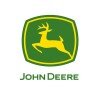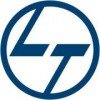i
Fanar Al Khaleej
Filter interviews by
Fanar Al Khaleej Mechanical Technician Interview Questions and Answers
Fanar Al Khaleej Mechanical Technician Interview Experiences
1 interview found
(2 Questions)
- Q1. What Type of motor
- Ans.
There are various types of motors used in mechanical systems, including AC motors, DC motors, servo motors, and stepper motors.
AC motors are commonly used in household appliances and industrial applications.
DC motors are often used in battery-operated devices and automotive applications.
Servo motors are used in robotics and automation systems for precise control.
Stepper motors are used in applications requiring precise...
- Q2. Main function of fuse
- Ans.
The main function of a fuse is to protect electrical circuits from overcurrent by breaking the circuit when a predetermined current limit is exceeded.
Prevents damage to electrical components
Protects against electrical fires
Commonly used in household electrical systems
Types include fast-acting and slow-blow fuses
(2 Questions)
- Q1. General quistion
- Q2. Asking Your family member
Interview Preparation Tips
Skills evaluated in this interview
Top trending discussions






Interview questions from similar companies

Mechanical Technician Interview Questions & Answers
VE Commercial Vehiclesposted on 11 Sep 2024
(1 Question)
- Q1. Obd full form in vehicle
- Ans.
On-Board Diagnostics
On-Board Diagnostics (OBD) is a system in vehicles that monitors the performance of the engine and emissions systems.
It helps to identify issues and malfunctions by providing codes that can be read with a diagnostic tool.
OBD systems have evolved over the years, with OBD-II being the current standard in most vehicles.
Examples of OBD codes include P0300 for random misfire and P0420 for catalytic conve

I applied via Approached by Company and was interviewed in Nov 2023. There were 2 interview rounds.

(6 Questions)
- Q1. Technician said
- Q2. Service technicians
- Q3. Service advisor
- Q4. Floor supervisor
- Q5. Service final quality inspection
- Q6. Technician completed
Interview Preparation Tips
- Love the way
- Technician said


(2 Questions)
- Q1. Differece between CNC & SPM
- Ans.
CNC stands for Computer Numerical Control and is used for automated machining processes, while SPM stands for Special Purpose Machine and is designed for specific tasks.
CNC machines are versatile and can be programmed to perform a variety of tasks, while SPM machines are designed for a specific task or operation.
CNC machines are commonly used in industries like automotive, aerospace, and manufacturing, while SPM machin...
- Q2. CNC And VMV afaefa vasvg svwg dvwefa dv advfadv sdvsdv
(2 Questions)
- Q1. What is hydraulics
- Ans.
Hydraulics is a branch of science and engineering that deals with the mechanical properties of liquids, particularly water and oil, and their applications in various systems.
Hydraulics involves the study of fluid mechanics, fluid properties, and the behavior of liquids under pressure.
It is commonly used in hydraulic systems such as hydraulic brakes in vehicles, hydraulic lifts, and hydraulic cranes.
Hydraulic systems wo...
- Q2. Fluide and pressure and vol.
Interview Preparation Tips

I applied via Naukri.com and was interviewed before Feb 2021. There was 1 interview round.
(1 Question)
- Q1. Previous work experience
Interview Preparation Tips

Senior Engineer Mechanical Interview Questions & Answers
RSPL Groupposted on 28 Oct 2024
(2 Questions)
- Q1. What is the code of steel use in plant?
- Ans.
The code of steel used in plants is typically specified by the American Society for Testing and Materials (ASTM).
Steel used in plants is often specified by ASTM standards.
Common codes for steel used in plants include ASTM A36, ASTM A572, and ASTM A516.
The specific code of steel used in a plant will depend on factors such as the type of plant, the structural requirements, and the environmental conditions.
- Q2. What is compressor & how it work?
- Ans.
A compressor is a mechanical device that increases the pressure of a gas by reducing its volume.
Compressors are commonly used in refrigeration, air conditioning, and gas turbines.
They work by taking in a gas at a low pressure and volume, and then reducing the volume to increase the pressure.
This process is achieved through the use of pistons, vanes, or rotating impellers.
The compressed gas is then released at a higher
(2 Questions)
- Q1. What is roots blower & it's working principle?
- Ans.
A roots blower is a type of positive displacement pump that operates by pumping fluid between a pair of meshing lobes.
Consists of two counter-rotating lobes that trap and move fluid through the blower
Fluid is pushed from the inlet to the outlet without compression
Commonly used in applications such as wastewater treatment, pneumatic conveying, and vacuum systems
- Q2. Tell me about truss, lover & peeling.
- Ans.
Truss, lever, and pulley are mechanical components commonly used in engineering for structural support and mechanical advantage.
Truss is a framework of beams used to support a structure, often in the form of triangles for stability.
Lever is a simple machine consisting of a rigid bar that pivots around a fixed point to amplify force.
Pulley is a wheel with a groove used to change the direction of a force, allowing for ea...
Interview Preparation Tips

Mechanical Engg. Design Interview Questions & Answers
Hyundai Motor India Limitedposted on 8 Sep 2024
I applied via Recruitment Consulltant and was interviewed in Aug 2024. There was 1 interview round.
(3 Questions)
- Q1. What is the capacity of diesel and petrol
- Ans.
Diesel has higher energy density than petrol, resulting in better fuel efficiency.
Diesel has a higher energy density than petrol, meaning it can provide more energy per unit volume.
Petrol is more volatile and burns faster than diesel.
The capacity of diesel and petrol tanks in vehicles can vary depending on the size of the vehicle and its fuel efficiency.
For example, a typical car may have a petrol tank capacity of arou...
- Q2. Difference b/w petrol engine & diesel engine
- Ans.
Petrol engines use spark ignition, while diesel engines use compression ignition.
Petrol engines use a spark plug to ignite the fuel-air mixture, while diesel engines rely on compression to ignite the fuel.
Petrol engines are lighter and more responsive, while diesel engines are more fuel-efficient and have higher torque.
Petrol engines are more common in cars and motorcycles, while diesel engines are often used in trucks
- Q3. What is meant by LNTD
- Ans.
LNTD stands for Logarithmic Mean Temperature Difference.
LNTD is a term used in heat transfer calculations to determine the overall temperature difference between two fluids in a heat exchanger.
It is calculated using the formula LNTD = (ΔT1 - ΔT2) / ln(ΔT1 / ΔT2), where ΔT1 and ΔT2 are the temperature differences at the two ends of the heat exchanger.
LNTD is important in designing efficient heat exchangers to maximize h...
Interview Preparation Tips
- Thermodynamics
- mettalurgy
- Thermal Engineering
For example : In hyundai interview HR Asked all question mostly engine related and thermodynamics related questions only

I applied via campus placement at National Institute of Technology (NIT), Warangal and was interviewed in May 2024. There was 1 interview round.
(1 Question)
- Q1. Saturation curve subcooled supercooled

I applied via LinkedIn and was interviewed in Aug 2023. There was 1 interview round.
(2 Questions)
- Q1. Gd&t symbol, mechanical properties
- Q2. Tell me about yourself

(1 Question)
- Q1. TRIAL AND INTERVIEW GOOD BUT MAINEJMENT NOT GOOD
Interview Preparation Tips
Fanar Al Khaleej Interview FAQs
Tell us how to improve this page.
Interview Questions for Popular Designations
- Mechanical Engineer Interview Questions
- Diploma Mechanical Engineer Interview Questions
- Mechanical Maintenance Engineer Interview Questions
- Senior Engineer Mechanical Interview Questions
- Mechanical Fitter Interview Questions
- Mechanical Maintenance Fitter Interview Questions
- Mechanical Supervisor Interview Questions
- Mechanical Foreman Interview Questions
- Show more
Fanar Al Khaleej Mechanical Technician Interview Process
based on 1 interview
Interview experience
Mechanical Technician Interview Questions from Similar Companies
|
Manager Research Development
4
salaries
| ₹19 L/yr - ₹48 L/yr |
|
Refrigeration Technician
4
salaries
| ₹6.5 L/yr - ₹7 L/yr |
|
Development Manager
3
salaries
| ₹27 L/yr - ₹27 L/yr |
|
Technical Manager
3
salaries
| ₹30 L/yr - ₹34 L/yr |
|
Recruitment Head
3
salaries
| ₹5.4 L/yr - ₹12 L/yr |

Larsen & Toubro Limited

TCS

Reliance Industries

Infosys
- Home >
- Interviews >
- Fanar Al Khaleej Interview Questions >
- Fanar Al Khaleej Mechanical Technician Interview Questions





